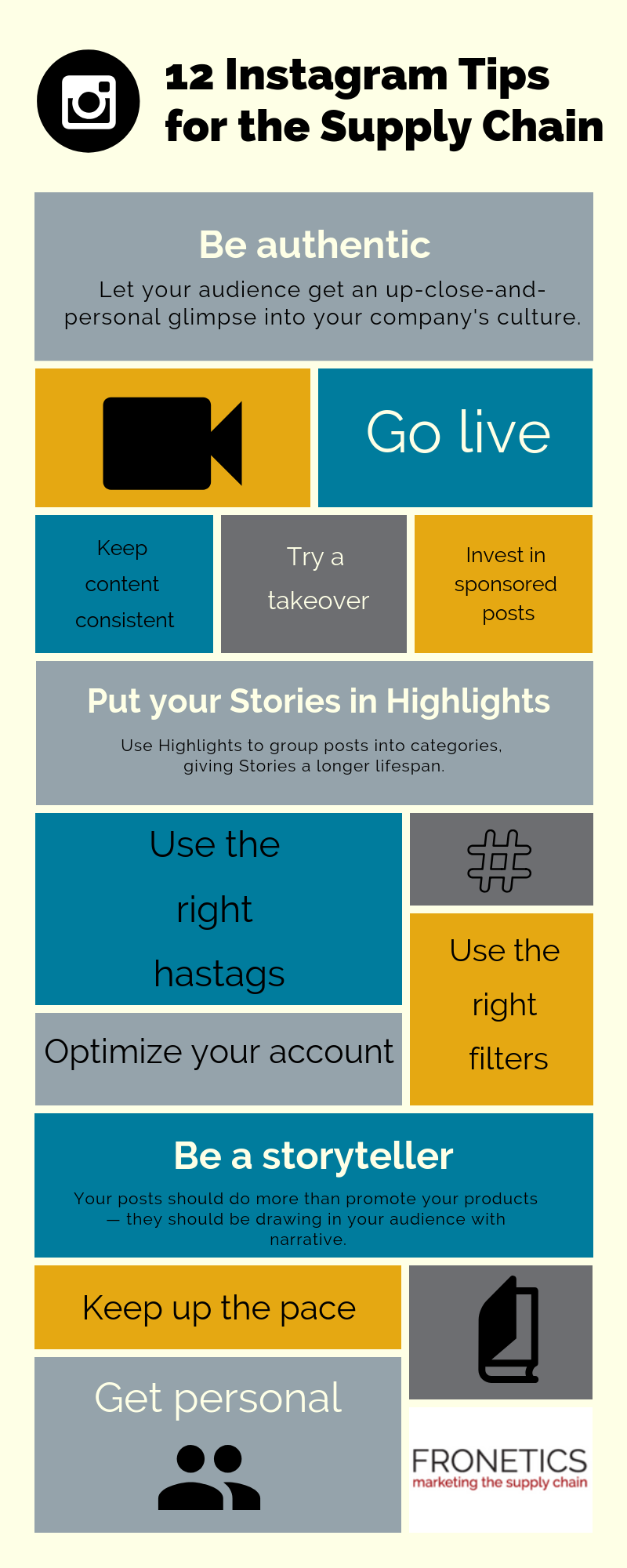
by Jennifer Hart Yim | Mar 27, 2019 | Blog, Content Marketing, Current Events, Leadership, Marketing, Supply Chain, Talent
In today’s job market, companies have to compete harder than ever before and candidates, realizing their position, have begun ghosting employers. Ghosting has never been in an issue in the professional setting until now.
Highlights:
- According to a new report, more companies and recruiters are getting ghosted, with thousands of users on LinkedIn chiming in about what seems to be a uniquely-millennial phenomenon moving into the workplace.
- Ghosting’s prevalence speaks to a talent attraction and retention problem that many companies are having in this marketplace.
- Recruiters who are specialized in your vertical have an established base of candidates, so you can remove ghosting from the equation entirely.
This guest post comes to us from Argentus Supply Chain Recruiting, a boutique recruitment firm specializing in Supply Chain Management and Procurement.
Many of us have (thankfully) been out of the dating game long enough that we’ve never experienced what most millennials have: the dreaded ghost. You meet someone new, hit it off, go on a few dates, maybe even tell your friends and parents about an exciting romantic prospect. Then the hammer drops: all of a sudden, radio silence. No “dear John” letter, no break-up text, and no explanation whatsoever. It’s a digitally-enabled way of severing ties that’s so casual it hurts, because the affected (dare we say victim?) never gets to find out what exactly happened. The imagination runs wild with possible motivations for this disrespect: was it them? Was it me?
You never really know. That’s what makes it so tough.
Now, according to reports, this peculiar social phenomenon has metastasized into the workplace:
The job market is so hot, more candidates are ghosting their employers. Or prospective employers.
Welcome to 2019.
It’s no secret that the hiring market is strong, with near-historic low levels of unemployment. Now, according to a recent NPR report, more companies and recruiters are getting ghosted. It’s also become a hot topic on LinkedIn, with thousands of users chiming in about what seems to be a uniquely-millennial phenomenon moving into the workplace. Reports about ghosting even made their way into a recent report from the U.S. Federal Reserve – which shows that ghosting isn’t just a meme, but something that’s really affecting companies’ hiring practices and their bottom line.
NPR – as well as this great article by LinkedIn Contributor Molly Mosley – identify three key species of ghost:
- The employee who accepts a role and gets into the job – thankfully, it’s not often a long-term employee, otherwise a missing person report might be in order – and leaves without a trace.
- The job candidate who books a job interview, or accepts a role, and doesn’t show up, or send any kind of communication or response when contacted.
- The candidate who works with a recruiter, asks to be submitted for a role, and then stops responding. There are quite a few reports about this, but we’re lucky that we haven’t experienced it as much in our recruitment practice at Argentus.
Ghosting is a very modern-feeling phenomenon. It’s a symptom of a more relaxed – dare we say, lax – approach to interpersonal and professional relationships brought about by digital technology. But it’s also a symptom of something more fundamental about this job market:
It’s a candidate’s market – especially in high-demand STEM fields like Supply Chain.
We’re willing to bet that in a recession, all these ghosts would become corporeal again. But for now, candidates have all the leverage, and what’s more, they’re beginning to realize this, which means that companies have to compete harder than ever before.
Don’t get us wrong: ghosting is unacceptable, and we don’t mean to excuse it. No one would want to hire a candidate who’s ghosted an employer in the past, and we’d stop working with anyone if we found out they’ve done it before. It’s, in short, the height of unprofessionalism. Any company who gets ghosted on has really dodged a bullet: who would want to work with someone who would resort to such a childish and cowardly tactic?
But ghosting’s prevalence still speaks to a talent attraction and retention problem that many companies are having in this marketplace. Consider this: if your company interviews someone, and never gives any form of feedback or follow-up – which still happens, believe it or not – you’re ghosting candidates as well.
It cuts both ways. And that gestures towards a few changes that companies can make to help minimize the risk of ghosting – which can waste thousands of dollars of company resources:
Smooth out the onboarding process.
In short, treat prospective candidates like a valuable strategic asset instead of a disposable endless resource. The accounts of ghosting from the workers in the NPR story, as well as others, share something in common: the workers felt disrespected or disregarded by their employers.
[bctt tweet=”The accounts of ghosting from the workers in the NPR story, as well as others, share something in common: the workers felt disrespected or disregarded by their employers.” username=”Fronetics”]
Treating candidates with respect is table stakes in this hiring environment. But consider the ways that you’re unintentionally depersonalizing the hiring and onboarding process: letting it get drawn out with endless approvals and interviews, resorting to impersonal communication methods, failing to have succinct and effecting onboarding policies to get new candidates up to speed.
Lastly, because we can’t resist: a specialized recruitment partner will forward pre-vetted candidates, often ones that they’ve known for years, who you know won’t ghost. Recruiters who are specialized in your vertical have an established base of candidates, so you can remove ghosting from the equation entirely.
But what’s your experience? Have you been ghosted by an employee or job candidate before? Why do you think this issue is coming into the zeitgeist right now?
Related posts:


by Fronetics | Mar 26, 2019 | Blog, Content Marketing, Logistics, Marketing, Supply Chain, Video Marketing
The popularity of video marketing is on the rise, and savvy supply chain marketers are using this medium to tell their brand’s story, broaden their audience, and generate leads.
Highlights:
- Use video to tell your brand’s story, broaden your audience, and generate leads.
- As marketing expands in a more visual direction, marketers should adjust their strategies to favor content that lends itself to this kind of storytelling.
- Consider accompanying data-heavy blog posts with explanatory animated videos, conducting and sharing video interviews with industry executives, or turning a case-study into an animated video presentation.
Video transcript:
I’m Frank Cavallaro, CEO and founder of Fronetics, and today I’m going to be talking about video marketing and the supply chain.
Video is the most popular content being consumed online today. And it shows no sign of letting up. Video let’s savvy marketers tell their brand’s story, broaden their audience, and generate more leads. Video allows the marketer to consistently deliver content that is visually stimulating and valuable.
[bctt tweet=”Using animated video for case studies makes them easier to understand for the user. And because they’re entertaining and engaging, there’s a huge ROI that comes along with them.” username=”Fronetics”]
Consider pairing data-heavy blog posts with some sort of video, whether its animated or a subject matter interview. Using animated video for case studies makes them easier to understand for the user. And because they’re entertaining and engaging, there’s a huge ROI that comes along with them.
When using video remember what you need is quality, high engaging, well researched content. For more information, visit us at fronetics.com.
Related posts:


by Fronetics | Mar 21, 2019 | Blog, Content Marketing, Logistics, Manufacturing & Distribution, Marketing, Supply Chain
When it comes to growing your material handling business, digital marketing can set your company apart, capture quality leads, and keep your sales pipeline full.
Highlights:
- Material handling is extremely competitive and faces challenges like rising interest rates, trade policies that are increasingly inhospitable, and a scarcity of skilled labor, among others.
- Blog posts, e-books, tip sheets, guides, case studies, videos, and other forms of content go a long way toward attracting prospects to your digital assets.
- Arming your sales rep with targeted content to share with prospects during specific moments of the purchasing process advances their reputation as a knowledge source.
Last year, the MAPI Foundation predicted an average of 2.8% growth in manufacturing over the next three years, as well as an increase in capital equipment expenditure by over twice that. For makers of material handling equipment like conveyers, lift-trucks, and handling structures, MAPI’s forecast is good news.
As with all aspects of the supply chain industry, material handling is extremely competitive and faces challenges like rising interest rates, trade policies that are increasingly inhospitable, and a scarcity of skilled labor, among others.
For your business to participate in the forecasted global growth, your best bet is a sales funnel that’s consistently filled with quality prospects. But how do you make that happen?
Here’s where content marketing can help.
Digital marketing keeps you visible to your highest quality prospects
In the fiercely competitive material handling landscape, in which potential customers have a wide array of options, marketers face the challenge of visibility within the industry. Setting your business apart from your competition is obviously crucial to cultivating and captivating leads.
[bctt tweet=”Blog posts, e-books, tip sheets, guides, case studies, videos — all these forms of content go a long way toward attracting prospects to your digital assets, building trust, growing your reputation, and, ultimately, converting leads.” username=”Fronetics”]
Perhaps your best strategy for achieving this kind of visibility is content. Blog posts, e-books, tip sheets, guides, case studies, videos — all these forms of content go a long way toward attracting prospects to your digital assets, building trust, growing your reputation, and, ultimately, converting leads.
Generating leads with content
A content-rich site has great advantages in terms of SEO (for more on this, check out our four-part series on writing for SEO), which is key to visibility. Creating quality content and structuring your site effectively will help capture leads. As developing and sharing content attracts prospects to your site, effective calls-to-action (CTAs) drive prospects to share their contact information in exchange for information that has value for them.
Keep in mind when planning and creating your content that your goal is not to push your products — a mistake many material handling marketers make. Instead, use your content to demonstrate to prospects that you have a deep understanding of their business and the unique needs and challenges they face. Offer useful information for each stage of the buyer’s journey. Remember, the most valuable asset you have to offer is your knowledge and expertise.
Align content with sales
Keeping your sales pipeline full is your goal when it comes to competing in the material handling marketplace. Arming your sales rep with targeted content to share with prospects during specific moments of the purchasing process advances their reputation as a knowledge source. That can be the key to getting a foot in the door, advancing through the final stages of a purchasers’ decision, or closing the deal.
When digital marketing and sales work together, you’ll see the results hit your bottom line. Curating and creating great content will generate quality leads for your company. And it also empowers your sales force to build relationships with potential customers — and close the sale.
Related posts:


by Fronetics | Mar 20, 2019 | Blog, Content Marketing, Marketing, Social Media
Many B2B organizations are using Instagram to grow business. Here are a dozen Instagram tips to help you use the platform effectively.
Highlights:
- Instagram has become the second most used social media platform, up from fourth in 2017.
- Audiences love real-time content, like Instagram Stories. It lets them feel a genuine, human connection — the creation of which sometimes poses a challenge for B2B marketers.
- An effective Instagram presence has the potential to grow brand awareness, improve your reputation, and generate qualified leads.
Recent research on social media use shows that 66% of brands now use Instagram. As of 2018, it was second-most used platform by businesses, up from fourth in 2017. If you’re considering using this social media network for your business, which you should be, our 12 Instagram tips can help you get started.
12 Instagram Tips for Supply Chain Companies

(Made with Canva)
1. Be authentic
Many supply chain companies often fall into the trap of using stock photography or overly staged promotional pictures of products. The ethos of Instagram is all about authenticity and personality. Let your audience get an up-close-and-personal glimpse into your company’s culture with real photos of the people, places, and things that make your business run every day.
2. Optimize your account
Before we get to anything fancy, take a step back and make sure your Instagram account is fully optimized. This means you need:
- a bio with a link to marketing or product pages related to a specific keyword or hashtag;
- image captions, which can reference the link in your bio;
- a search-friendly username; and
- a compelling profile image that reflects your company.
3. Go live
Live video is the “it” trend in social media marketing, with 63% of marketers reporting that they plan on adding it to their overall strategy. Audiences love real-time content, and it lets them feel a genuine, human connection — the creation of which sometimes poses a challenge for B2B marketers.
4. Put your Stories in Highlights
In addition to its Stories feature, Instagram now lets users create a featured group of “Highlights” in various categories on their profiles. Stories have only a 24-hour lifespan, so featuring your most effective Stories clips in Highlights gives them a second life and a chance to engage future followers. One of the best features of Stories and Highlights is that it allows companies to view and analyze how users have viewed and interacted with their content.
5. Keep up the pace
Instagram is one of the easiest social media platforms to post on. That means you can quickly snap photos wherever you are — say, at a conference or event, or even on your way into the office — and publish it instantly. This is great for reaching the coveted millennial audience, which seems to have an unquenchable thirst for consuming content, particularly images and graphics.
6. Keep your content consistent
Posting on a consistent timetable is crucial to maintaining an active following. Posting irregularly means you risk your followers forgetting about you, and posting all at once can annoy and drive followers away. Ideally, companies should post 2-3 times a day, but you’ll need to test how many times a day is most effective for your particular business in engaging your specific audience. For more, check out our guide to when to post on social media.
7. Try a takeover
Taking over the Instagram account of a partner company or customer is a great way to draw attention from an existing and relevant audience, providing mutual benefits to both parties.
8. Invest in sponsored posts and product reviews
Optimizing your account and following Instagram best practices will go a long way toward earning authentic followers that could become future leads and/or customers. But to really boost your impact, it pays to take advantage of influencer marketing on Instagram. Create a list of large accounts in your vertical (think industry media sites and partners), follow them, and reach out to their marketing team to ask about sponsored-post pricing. Be on the lookout for influencers with a high engagement rate relative to number of followers.
[bctt tweet=”Optimizing your account and following Instagram best practices will go a long way toward earning authentic followers that could become future leads and/or customers.” username=”Fronetics”]
9. Use the right hashtags
One of the most effective ways to grow your Instagram following is to use hashtags effectively. Since Instagram gives users the ability to follow hashtags that interest them, and they function as links to other relevant content, choosing the right hashtags is the ideal way to reach and engage your target audience.
Keep an eye on accounts of peer brands to stay up to date with the best hashtags to use. The most effective hashtags are short, memorable, and easy to read. You can also use an online tool like InconoSquare or Websta to find relevant hashtags for your business.
10. Use the right filters
Sure, filters are great for turning boring or poorly lit photos into more engaging images. But, it turns out that which filter you choose really does have an impact on engagement. These lighting and color presets offered by Instagram have the potential to create mood and style in your image content. According to Iconosquare, these 10 filters are currently the most popular on Instagram:
- Normal (No Filter)
- Clarendon
- Juno
- Lark
- Ludwig
- Gingham
- Valencia
- X-Pro II
- Lo-fi
- Amaro
11. Be a storyteller
Instagram is all about visual storytelling. Your posts should do more than promote your products — they should be drawing in your audience with narrative told through a visual format. Instagram Stories are an ideal way to engage your audience!
12. Get personal
Go in deep and personal with your customers by answering their questions via 10-second videos. You let your viewers feel like they’re being heard. Plus, short videos are ideal for reposting.
The Bottom Line
Instagram is an extremely effective tool for B2B businesses. These Instagram tips for using the platform will help you create and nurture a loyal, engaged audience base. In turn, an effective Instagram presence has the potential to grow brand awareness, improve your reputation, and generate qualified leads.
Related posts:


by Elizabeth Hines | Mar 20, 2019 | Blog, Logistics, Robotics & Automation, Supply Chain
With the power to drastically increase efficiency in all areas of the supply chain, it’s important brands are exploring the benefits of AI. Here are four examples of how AI can benefit your supply chain.
Highlights:
- It’s estimated that supply chain firms could gain $1.3 to $2 trillion a year from using AI.
- Machine learning has the ability to quickly discover patterns in supply chain data by relying on algorithms and constraint-based modeling to find the most influential factors.
- The increasing popularity of chatbots is making it harder to ignore how AI is helping shape not just the daily logistics but also the B2B marketing landscape and operational procurement for supply chain industries.
Artificial intelligence is not simply affecting supply chain management, it is revolutionizing it.
With the power to drastically increase efficiency in all areas of the supply chain, McKinsey estimates that firms could gain $1.3 trillion to $2 trillion a year from using AI in supply chain and manufacturing.
Here are 4 examples of AI and how it’s changing supply chain management for the better.
1. Autonomous transport
There’s nothing more exciting than the field of autonomous transport for SCM. We’ve all known for many years that driverless trucks have major potential to affect supply chain management and logisitics.
We aren’t there yet – and “anyone employed as a driver today will be able to retire as a driver” — but if autonomous trucking can be developed to its potential, the technology would effectively double the output of the U.S. transportation network at 25 percent of the cost.
The conversation is no longer simply talking about vehicles on the road either. Google and Rolls-Royce recently partnered to build autonomous ships too.
2. Final-mile delivery route efficiency
One doesn’t have to have a driverless vehicle, however, to use AI to optimize delivery logistics.
For example, in the “devilishly complex” task of delivering 25 packages by van, the number of possible routes adds up to around 15 septillion (that’s a trillion trillion).
That’s where route optimization software and AI-powered GPS tools like ORION — which UPS uses to create the most efficient routes for its fleet — are making their mark. With ORION, customers, drivers and vehicles submit data to the machine, which then uses algorithms to creates the most up-to-date optimal routes depending on road conditions and other factors.
And there are also other autonomous entities out there besides cars, trucks, and ships. Robots using LIDAR technology are now being used to deliver items in crowded city environments. For example, Marble’s robots deliver medicine, groceries, and packages, and they also track their routes and the condition in order to continuously improve delivery for the next time. Additionally, last-mile solutions with drones continue to be explored due to their ability to move quickly and bypass almost all ground-level obstacles.
3. Demand forecasting, particularly for warehouse management and SCM strategy
Machine learning has the ability to quickly discover patterns in supply chain data by relying on algorithms and constraint-based modeling to find the most influential factors. This ability to find data patterns without human intervention has applications in EVERY aspect of SCM, but demand forecasting is a particularly influential component beneficiary.
Warehouse management and SCM strategy rely heavily on correct supply, demand, and inventory-based management. Forecasting engines with machine learning offer an entirely new level of intelligence and predictive analysis of big data sets that provides an endless (and constantly self-improving) loop of forecasting, overhauling the way we manage inventory and the way we create new strategies for our industries.
4. Chatbots for marketing and operational procurement
The increasing popularity of chatbots is making it harder to ignore how AI is helping shape not just the daily logistics but also the B2B marketing landscape and operational procurement for supply chain industries.
A chatbot is a computer program that simulates human conversation using auditory or textual methods. It communicates with your customer inside a messaging app, like Facebook Messenger, and is similar to email marketing without landing in an inbox. Mimicking a human conversation, chatbots currently allow for increased customer engagement through messaging app technology that isn’t yet saturated with marketing. They are just one of the many ways to integrate AI and marketing.
There’s so much more than these 4 examples to consider when discussing AI and the supply chain: prediction of delivery arrival times to the warehouse and to the customer, cargo sensors, automated purchasing, financial applications…the list literally may be endless.
Choosing what to focus on for this article, and more importantly, for all supply chain and logistics businesses, is a tough decision, but one thing is clear: in the “arms race” to leverage AI in SCM, some will come out on top and some will be left behind.
This post originally appeared on EBN Online.
Related posts:


by Fronetics | Mar 15, 2019 | Blog, Marketing, Marketing Automation, Packaging, Supply Chain
Packaging industry marketers: check out these marketing automation tools for email workflows, social media scheduling, and customer relationship management.
Highlights:
- Customers increasingly expect packaging to be personalized to suit their needs.
- Personalize leads’ interactions with your business through automated processes.
- Get help with email workflows, social advertising, and customer relationship management.
Lately it seems like everyone is talking about marketing automation. As B2B buyers increasingly demand personalized experiences through the buyer’s journey, marketers’ jobs are getting tougher, as they need to provide custom lead-nurturing content to all prospects in their databases. This is particularly true for the packaging industry, as B2B customers expect that packaging will be highly personalized to suit their needs.
And that’s where automating marketing tasks can help.
The term “marketing automation” refers to a variety of tools used to automate the process of personalizing leads’ interactions with your business. The sheer variety of these tools can sometimes be overwhelming — so we’ve pulled a few of our favorites in the categories of email workflows, paid advertising, and customer relationship management.
6 marketing automation tools packaging marketers
Email workflows
1. Customer.io
This tool lets you send targeted messages to your customers, crafting them based on how they interact with your business and making personalized messages simple. You can also keep track of conversions and create customer profiles. Our favorite part? It integrates with your mobile app or website, letting you see data in real time and trigger actions by adding in predefined rules.
2. Constant Contact
This powerful tool has some features that are unique — and can take your marketing capabilities beyond the basics. Beyond setting up and managing an automated database, Constant Contact offers Facebook fan promotion, coupons and deals, and event management.
Paid advertising tools
3. AdRoll
This is an extremely effective tool for retargeting customers through re-engagement on Facebook, Twitter, and elsewhere on the web. It offers cross-device and cross-platform retargeting capabilities, as well as flexible segmentation, letting you provide customized experiences that dramatically improve your marketing efficiency. It also offers customized budgeting and full control over ad spend.
Customer relationship management (CRM)
4. Pardot
Pardot is an all-inclusive marketing automation suite, but it’s particularly strong for amping up your engagement with CRM integration. It’s a great tool for helping your sales team shorten the sales cycle. And, in addition to CRM integration, it offers email marketing, lead nurturing, lead scoring, and ROI reporting.
5. Marketo
This cloud-based marketing software lets you drive revenue with lead management and mobile marketing. It not only helps build customer relationships, but it helps you sustain them as well. Best of all, you can try it out for free until you’re sure it’s right for your business.
Bonus all-in-one tool
6. HubSpot
HubSpot is an inbound marketing tool that lets you generate leads, close deals, and manage your sales pipeline from start to finish. It integrates beautifully with a content marketing strategy, with the goal of turning outbound leads into inbound ones. It includes revenue reporting, custom-event reporting, custom-event automation triggers, predictive-lead scoring, contacts and company reporting, and event-based segmentation.
What marketing automation tools are you using to create efficiencies in your packaging business?
Related posts:












